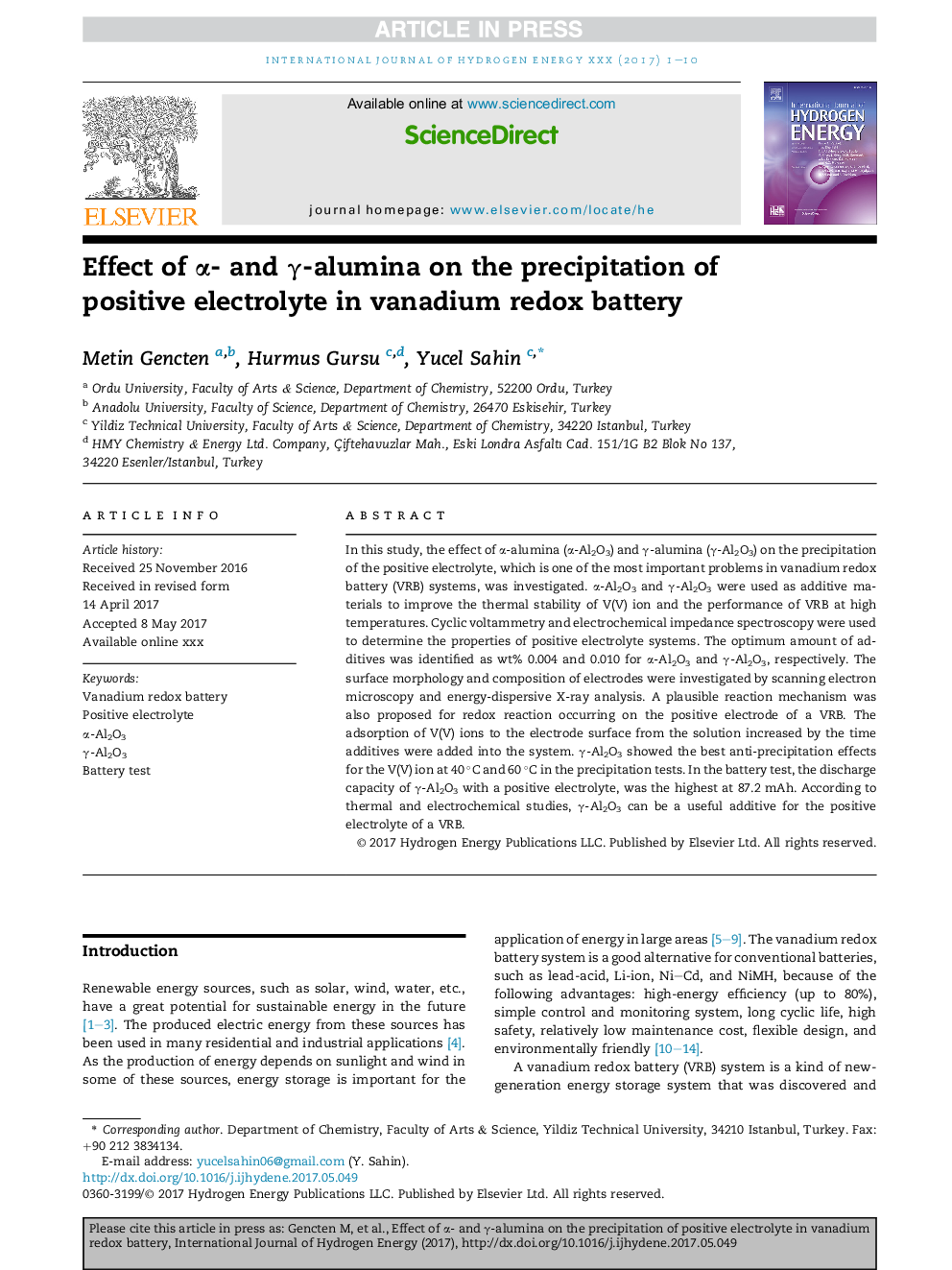| Article ID | Journal | Published Year | Pages | File Type |
|---|---|---|---|---|
| 5145659 | International Journal of Hydrogen Energy | 2017 | 10 Pages |
Abstract
In this study, the effect of α-alumina (α-Al2O3) and γ-alumina (γ-Al2O3) on the precipitation of the positive electrolyte, which is one of the most important problems in vanadium redox battery (VRB) systems, was investigated. α-Al2O3 and γ-Al2O3 were used as additive materials to improve the thermal stability of V(V) ion and the performance of VRB at high temperatures. Cyclic voltammetry and electrochemical impedance spectroscopy were used to determine the properties of positive electrolyte systems. The optimum amount of additives was identified as wt% 0.004 and 0.010 for α-Al2O3 and γ-Al2O3, respectively. The surface morphology and composition of electrodes were investigated by scanning electron microscopy and energy-dispersive X-ray analysis. A plausible reaction mechanism was also proposed for redox reaction occurring on the positive electrode of a VRB. The adsorption of V(V) ions to the electrode surface from the solution increased by the time additives were added into the system. γ-Al2O3 showed the best anti-precipitation effects for the V(V) ion at 40 °C and 60 °C in the precipitation tests. In the battery test, the discharge capacity of γ-Al2O3 with a positive electrolyte, was the highest at 87.2 mAh. According to thermal and electrochemical studies, γ-Al2O3 can be a useful additive for the positive electrolyte of a VRB.
Related Topics
Physical Sciences and Engineering
Chemistry
Electrochemistry
Authors
Metin Gencten, Hurmus Gursu, Yucel Sahin,
